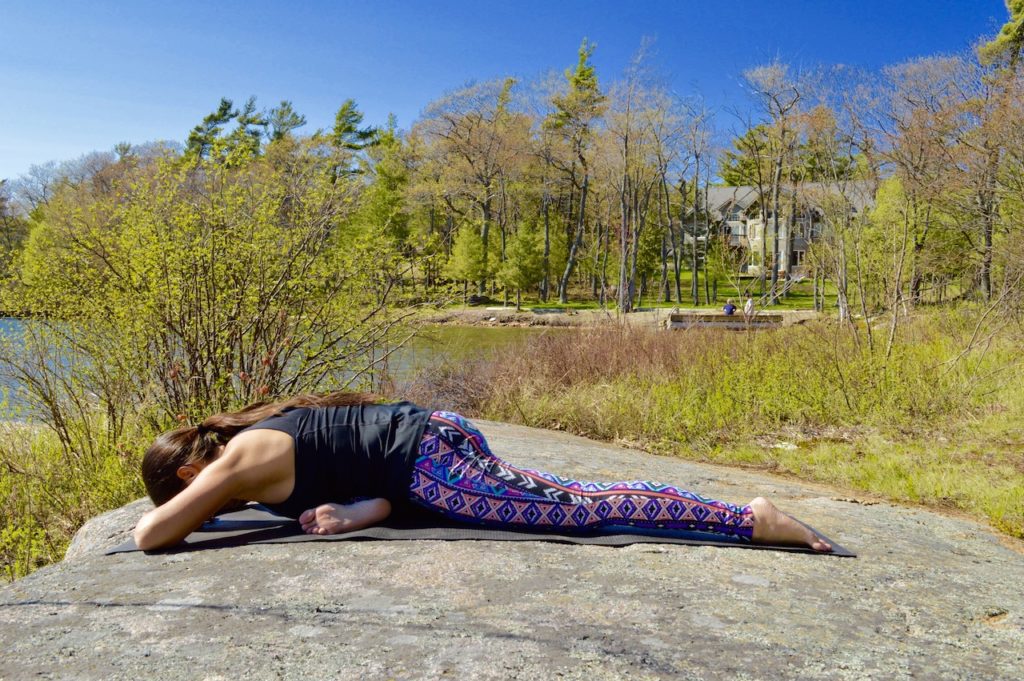How This Helps
Pigeon pose is an excellent hip-opener. Often, having strong hip flexor muscles (think muscle examples) means have tight hip flexor muscles. Runners, cyclists and weight lifters can usually related! This asana helps reduce this tightness by stretching the hip flexor muscles such as the psoas as well as the hip rotator muscles like the piriformis. If our hips are tight, our pelvis can tilt out of line and create problems in the spine. Opening the hips is an essential aspect of releasing tension in the lower back. This pose can also aid in getting relief by releasing built up stress in sciatic and back pain and benefiting those with anxiety disorders .
See: Yoga to make you feel good all the time
See: Yoga Treatment For Arthritis Pain
Instructions
This posture is often used as a restorative pose. If it is comfortable for you, try to remain in it for more than five breaths as the hip flexors and buttocks can be slow to release.
Step 1: Start from a high plank position. Bring your right knee to your right hand and place your foot as close to your left hand as you can comfortably place it.
Step 2: Aim to bring your shin parallel with the top of your mat. If this is doesn’t feel great, bring your right heel in closer to your body.
Step 3: Place your weight evenly between both hips. Use your hands to remain propped up. Look behind you and make sure your left foot is in line with your left hip.
See: Yoga Asanas For Healing IBS And Gut Health
Step 4: Lower your upper body down to your forearms. You may also bring your chest to rest on the ground. Remain here for at least five breaths.
Step 5: Switch to the other side by using your arms to bring yourself up and push back into downward facing dog. Step your other leg through and repeat on the left.







